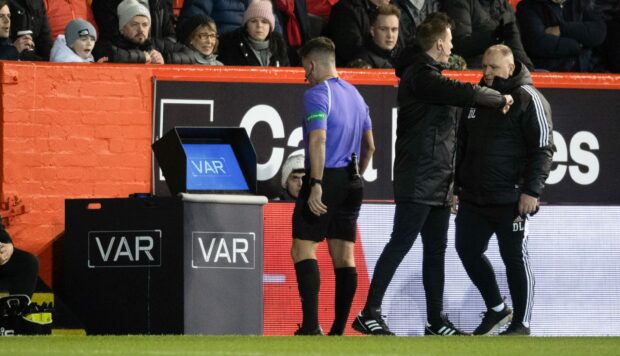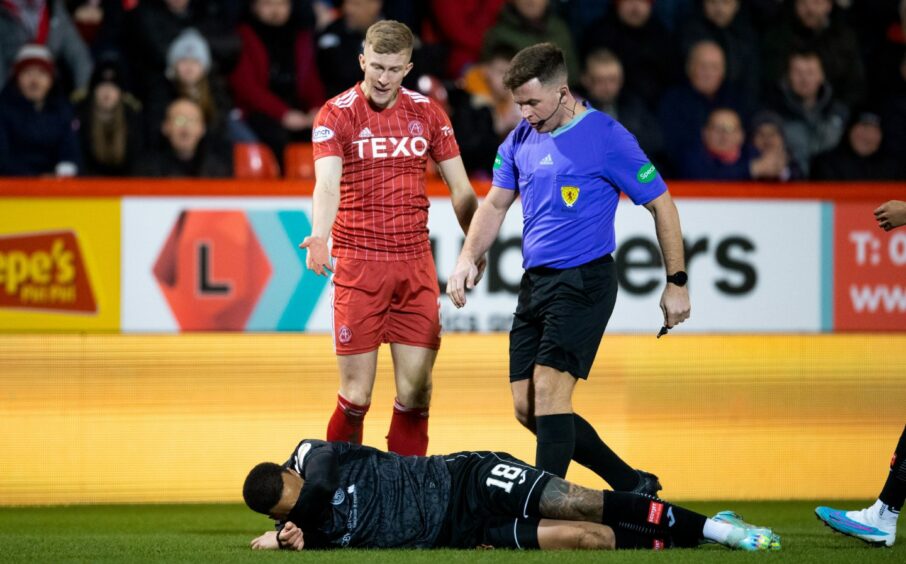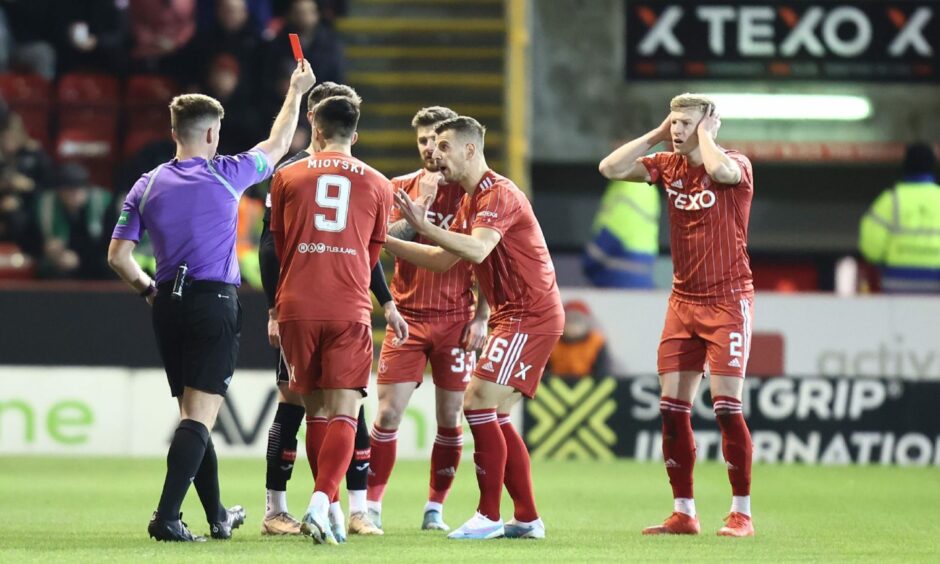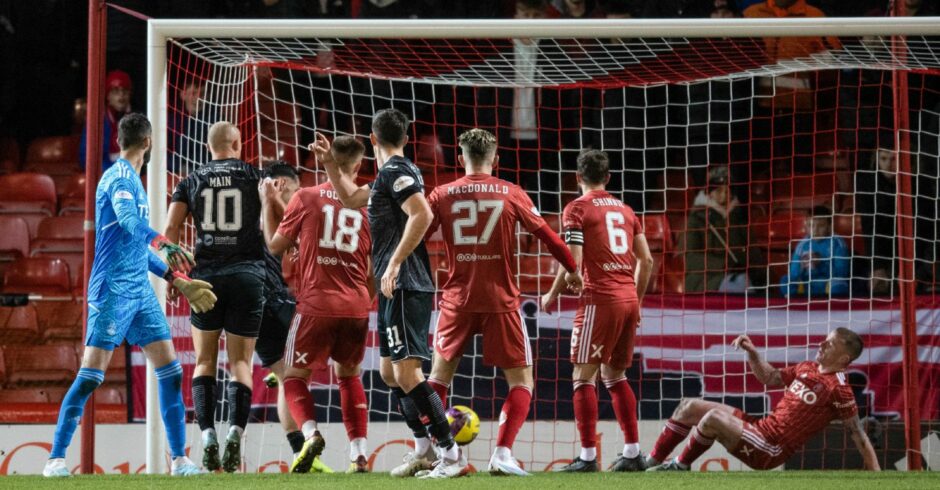Aberdeen’s 3-1 loss against St Mirren on Wednesday was another Premiership game defined by a VAR-influenced refereeing decision – and our officiating expert thinks the controversial early call to send off the Dons’ Ross McCrorie was just about the right one.
The Pittodrie league clash with the Buddies was the Reds’ first outing since Jim Goodwin’s sacking at the weekend, and also Barry Robson’s first match as interim manager, but Robson’s gameplan was dealt a heavy blow when McCrorie was dismissed after just seven minutes, following a coming together with Charles Dunne.
Here’s what our resident refereeing guru made of how the incident – which followed red cards in both of the previous meetings between the sides this term – unfolded, and whistler Grant Irvine’s eventual decision to dismiss the Aberdeen player:
Extension of arm was McCrorie’s downfall
At the time of the coming together between Ross McCrorie and Charles Dunne – after McCrorie had driven with the ball to the edge of the St Mirren area – nobody seemed to claim for a red card.
I don’t even think anyone even considered the possibility of there being a foul by the Aberdeen player, and most fans were claiming for a free-kick against Dunne for obstruction.
However, after a three-minute check in the background, referee Grant Irvine was advised to head to the monitor by the man in charge of VAR for the game, Gavin Duncan, to review McCrorie’s part in the incident – and a potential elbow.
After a long, frustrating period of watching the flashpoint back, he clearly felt he’d eventually found a “clear and obvious” error and sent McCrorie off.
I originally thought this was a ridiculous decision from inside the stadium – my feeling was, considering the referee had actually already awarded St Mirren a free-kick before VAR got involved, he obviously felt he had sufficiently punished McCrorie for whatever infringement he’d seen (unless he hadn’t seen anything and was completely guessing with his initial decision, of course!).
But, after reviewing the incident again myself, and despite the chaos of how the red card came about, I am a little bit more on the fence about whether McCrorie deserved to walk.
McCrorie does hit Dunne with his elbow and, crucially, there is an extension of his arm across his face.
On one hand, you could ask what is McCrorie supposed to do? He is charging full pelt towards the goal, and the natural reaction is to use the arm to meet the incoming defender. Dunne arguably fouls him first and the only reason McCrorie raises his arm is to try to muscle past him.
However, there is also the argument of why he is not only raising his arm to protect himself, but also extending his elbow, even if he doesn’t intend to connect with Dunne’s face?
I think in this day of age, and how the game of football now is, referees with access to VAR and the ability to watch an incident like that multiple times, will more often than not give it as a red card – although, with VAR, it has become clear consistency still isn’t anywhere near guaranteed.
However, I’m saying that while also maintaining it was a pretty poor performance from Irvine over the 90 minutes.
Free-kick call for Main’s opener was absolute shambles
There were other moments worth mentioning from a refereeing standpoint in the Dons’ defeat to the Buddies.
Former Aberdeen player Curtis Main would give the Saints the lead early in the second half when he headed in from a free-kick.
The decision to award the free-kick for handball, though, was absolutely shambolic – as the ball clearly hit the face and the shoulder of Graeme Shinnie.
Again, nobody claimed for the decision the referee awarded, as it was clear that the ball did not hit the hand of Shinnie.
It was an incorrect decision which directly played a part in a goal.
Aberdeen were then awarded a penalty and a lifeline back into the game as Luis “Duk” Lopes was taken down in the box.
I agreed with the decision of the referee on this occasion, as it was a clear and clumsy foul – although I have noticed Duk seems to be getting less and less from officials when he goes down as the season progresses.
Gallagher goal underlines need for goal-line technology – and why it should’ve come in before VAR
St Mirren would regain the lead and then finally kill the game at 3-1 with another former Don Declan Gallagher getting the goal.
Jonny Hayes thought he had cleared the ball off the line, denying Gallagher.
But, after a VAR check, it was ruled the ball had crossed the line and the goal was awarded.
Again, you have to question why we have VAR in Premiership grounds, but no goal-line technology, which takes a lot of the capacity for human error out of these “had it crossed the line?” moments.
If the decision is incredibly tight, how can the VAR officials possibly tell if the ball is across the line just by looking at it?
I feel there was more of an argument to have goal-line technology in grounds than there was VAR. For Scottish football to start with a small, reliable technological aid and work our way up.
Finlay Elder has been a registered referee for six years and a category 5 official since 2019, with experience in the Highland League, juniors and Club Academy.





Conversation